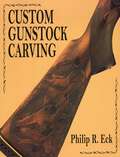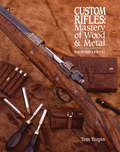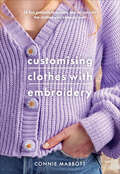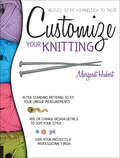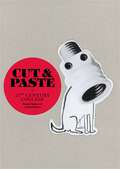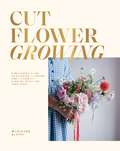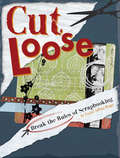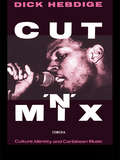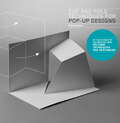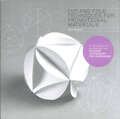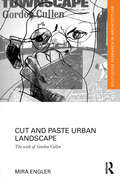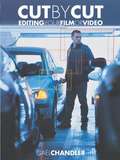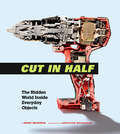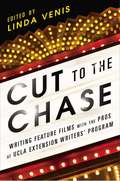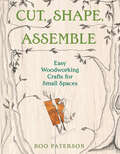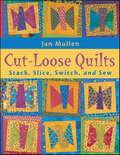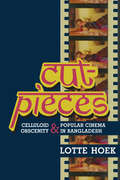- Table View
- List View
Custom Gunstock Carving
by Phillip R. EckPaperback reprint of the popular guide to carving gunstocks. Complete coverage of all tools and equipment with detailed explanations of all techniques, illustrated with precise line drawings. Extensive gallery of ready-to-use patterns.
Custom Rifles - Mastery of Wood & Metal
by Tom TurpinBehind the Scenes at David Miller Co.Join author Tom Turpin for a look at how some of the world's finest bolt-action rifles become functional works of art, after first being nothing more than wood and metal.Learn how true masters ply their talentsSee the creative progression of handwork unfold before your eyes.Experience the process that turns humble wood and metal into art.This edition will answer many questions and provide insight into the world of precision and custom gun craft.what about rifle stocks?Where does the barrel fit into the picture?How does function dictate form in gunmaking?No other book in the world covers David Miller Co. or custom guns in the same way. Truly, this book provides a unique insight into one of the premier custom rifle building operations of all time.
Custom Slipcovers Made Easy: Weekend Projects to Dress Up Your DTcor
by Elizabeth DubickiEasy Slipcovers? Absolutely! Do you have the sewing skills, but aren't quite sure you can handle a full-blown slipcover project? Then Custom Slipcovers Made Easy is for you! Author Elizabeth Dubicki walks you through the measuring, fitting and construction, step-by-step, to ensure you achieve the results you are looking for. There's nothing left to guesswork, with chapters on: Choosing a style of slipcover and appropriate fabric for your project How to measure and calculate yardage Making welting, cushion covers, slipcover shells, skirts and zipper closures Fitting and finishing techniques Ten project ideas, incorporating more than 25 techniques will help you get started. And once you've mastered the techniques, you'll be transforming your "old favorites" into new favorites!
Custom Socks: Knit to Fit Your Feet
by Kate AtherleyWhether you knit them toe-up or top-down, getting just the right fit on hand knit socks can be a major challenge! In Custom Socks, Kate Atherley sets out to teach knitters of all levels the skills and tools they need to understand sock fit, and to knit a pair of socks that fit properly. She calls on her years of experience as Knitty's Managing Technical Editor, where she has edited hundreds of sock patterns, to share this information in a way that is easy to understand with patterns that inspire.So go ahead and treat yourself to these 15 original sock patterns that are easily customizable and work with any needle configuration. Your feet will thank you!
Customising Clothes with Embroidery: 15 Fun Projects to Inspire You to Upcycle the Clothes You Already Own
by Connie Lousie MabbottStart embroidering your own clothes with inspiration from Connie’s book full of detailed embroidery projects that will have you captivated by the technique of free-motion embroidery. Starting with simple ideas that can be done in an afternoon to get you warmed up, and moving onto more complex, detailed projects that will keep you busy for weeks! Finished pieces like tops, denim and accessories will inspire you to start decorating your own clothes and fill your wardrobe with totally unique, upcycled pieces that no one else owns. The book is split into four parts, each with a range of embroidery projects to get you inspired to either patch up that old top with a hole or stain, or create something outstanding on that staple denim jacket you’ve been wanting to customise for ages - Don’t throw away something just because it’s no longer new! The book will cover all skill levels - from easy patches using straight lines, to big pieces with lots of color and shading for maximum impact and detail! There’s something for everyone to start with before challenging yourself and progressing onto more advanced designs. Each project will contain beautiful imagery of the design process from start to finish, showing how an embroidered garment is created from the initial thought processes and drawing stages, right through to the stitching techniques and the finished pieces.
Customize Your Clothes: 20 hand embroidery projects to update your wardrobe
by Emma WarrenEmbroidering your own clothes with the exact design you'd like adds a fun hint of personality to your wardrobe - try stitching dogs, flowers, slogans or patterns on to any garment.Using a range of stitches, techniques, materials and designs, Customize Your Clothes guides you through which tools to use, which stitches work best with certain designs, and also teaches you how to embellish with a range of materials to add a special personal statement to your items that costs next to nothing.Projects such as a plant T-shirt, a monogrammed sweater and a fun star hat make up this collection of ideas and inspiration for personalising your wardrobe. Even learn to decorate an old sweater with pom poms and cut shapes out of a pair of jeans you've had lurking in the back of your cupboard - the possibilities are endless, you just need some thread, a needle and a bit of inspiration! By customising your clothes you will have your own unique collection of items all embroidered to your taste, colour, style and design - hand-stitched by you.
Customize Your Knitting
by Margaret HubertPersonalize any knitting pattern by using your unique measurements to make a perfect fit and changing design details to suit your style.Designers have to create knitting patterns in standard sizes, but very few people actually match up to those “average” measurements. Body shapes vary, weight fluctuates, and good fit means different things to different people; so what is a knitter to do?Customize Your Knitting teaches you how to adjust standard patterns to fit your unique measurements. Through techniques that Margaret Hubert has used for years to teach classes on custom fitting, you can learn to adjust patterns for a perfect fit for yourself or someone else. Yarn shop instructors can use the book to teach classes for their customers.However, fit is just one part of customizing a garment. Maybe you’d like that neckline a little higher, or you’d like a little flare to the sleeves. How about adding subtle shaping to the waist on a boxy but otherwise perfect sweater pattern? How about adding a polo-style button placket to that plain crew-neck sweater? Or add a sporty buttoned pocket to a sleeve for carrying your iPhone. It’s easy to add your personal style with Margaret’s tips.Diagrams and illustrations throughout the book will help you understand body shapes and easily compare measurements. Garment construction, specific increases, decreases, and other shaping methods, as well as finishing techniques and embellishments are all explained and photographed clearly. Make every project perfectly tailored to you!
Cut & Paste: 21st-Century Collage
by Caroline Roberts Richard BreretonCollage is at the cutting edge of visual design, and can be seen everywhere from advertisements, magazine editorials and fashion stories to street art, album covers, animation and website design.Cut & Paste brings together over 250 images from more than 40 contemporary collage artists, including Serge Bloch, Borsodi Bela, Sara Fanelli, Julian House, Christoph Niemann, John Stezaker and Sergei Sviatchenko.
Cut & Paste: 21st-Century Collage
by Richard BreretonCollage is at the cutting edge of visual design, and can be seen everywhere from advertisements, magazine editorials and fashion stories to street art, album covers, animation and website design.Cut & Paste brings together over 250 images from more than 40 contemporary collage artists, including Serge Bloch, Borsodi Bela, Sara Fanelli, Julian House, Christoph Niemann, John Stezaker and Sergei Sviatchenko.
Cut Flower Growing: A Beginner's Guide to Planning, Planting and Styling Cut Flowers, No Matter Your Space
by Marianne SlaterCut Flower Growing will show you how to grow and harvest your own cut flowers at home, no-matter your space or skill-level.Split into three sections: Planning & Preparing, From Seed to Cutting and Creating with Blooms, this book takes you through the very basics of cut flower growing: how to plan your space and what you want to grow, what varieties to look for as well as feature some essential tips and tricks for maintaining healthy plants.Featuring simple ideas on how you can enjoy the spoils of your hard work with 12 beautifully inspiring, seasonal and stylish cut-flower arranging projects this stunning guide provides all the information you need to get started with your own cutting garden.
Cut It Out: Dictators, Despots & Other Bad-ass Hairdos
by Bryan The BurnsidesWhat do all despots and dictators across the ages have in common? Homicidal tendencies? Ruthless megalomania? A desire to enslave millions? Of course! But that isn't the whole story--it's all been foretold in the hair.Combing through history, every bad-ass from Genghis Khan to Donald Trump has clambered up the pole to ultimate power on the back of some of the most radical hairdos the world has seen. It's a proven scientific fact that the badder the dude, the bigger the rug statement - and Cut it Out features looks that will have you sprinting to the nearest salon to rock your locks.Cut it Out reveals just how the original 'dos were done and shares the intimate trade secrets of today's underground stylists hell-bent on creating total retro-hair war. Dust off that Mao suit, slip on that armband, and get ready for Big Bad Hair!
Cut Loose: Break The Rules Of Scrapbooking
by Crystal Jeffrey RiegerTake Your Scrapbooking Out of BoundsLife is full of rules, both written and unspoken - and scrapbooking is no exception. Rules are great guidelines, but they can quickly become boundaries that stifle creativity. It's time to Cut Loose and break free from the confines of typical scrapbooking to breathe new life into your pages.With tons of great layouts that illustrate how to break 30 common scrapbooking "rules," Cut Loose is bound to spark a bit of rebel in you, and get you creating in fresh new ways. Layouts illustrating how to break rules like "only good photos should be used" and "patterned paper must match" will open your eyes to conventional rules you might not even realize you're following, then show you how to push yourself to create without limits.Dare to be different with:Creative challenges for breaking the rules in the bookStep-by-step instructions for fun techniques like making custom stamps, flocking letters, creating pompoms and embossing paperMakeovers showing the same layouts both following and breaking the rulesA gallery of over 120 cut loose scrapbook pagesLearn how to ignore the "shoulds" and really Cut Loose.
Cut `n' Mix: Culture, Identity and Caribbean Music
by Dick HebdigeFirst published in 1987. Routledge is an imprint of Taylor & Francis, an informa company.
Cut and Fold Techniques for Pop-Up Designs
by Paul JacksonIntroducing techniques for making pop-ups from one sheet of card, the third title in this series on paper engineering takes folding techniques into the third dimension. Each chapter introduces a new technical idea and shows how that technique can be adapted in many different ways, or combined with techniques from earlier chapters. These 3-D techniques can be incorporated into any design where typography and/or illustration are used, including mail-shots, personal publicity, invitations, business cards and greetings cards. With their emphasis on surface design over complex cutting, the pop-ups have an instant appeal for designers.Following the elegant, easy-to-follow style of Paul Jackson’s other titles for Laurence King, Cut and Fold Techniques for Pop-Up Designs is an essential resource for marketing professionals and design students.
Cut and Fold Techniques for Pop-Up Designs
by Paul JacksonIntroducing techniques for making pop-ups from one sheet of card, the third title in this series on paper engineering takes folding techniques into the third dimension. Each chapter introduces a new technical idea and shows how that technique can be adapted in many different ways, or combined with techniques from earlier chapters. These 3-D techniques can be incorporated into any design where typography and/or illustration are used, including mail-shots, personal publicity, invitations, business cards and greetings cards. With their emphasis on surface design over complex cutting, the pop-ups have an instant appeal for designers.Following the elegant, easy-to-follow style of Paul Jackson’s other titles for Laurence King, Cut and Fold Techniques for Pop-Up Designs is an essential resource for marketing professionals and design students.
Cut and Fold Techniques for Promotional Materials
by Paul JacksonCut and Fold Techniques for Promotional Materials is a unique collection of over 40 attention-grabbing cut-and-fold designs that when printed and illustrated form memorable give-aways to promote and advertise services and products. The book provides a one-stop source for novelty promotional materials, many appearing in print for the first time.Some designs are interactive toys that turn inside out or reveal hidden faces when played with, others are more practical, offering ingenious ways to fold-up letters, brochures and posters, or to create novelty envelopes and leaflets. All the designs will enhance a message or presentation, grabbing attention in ways that simple printing can never achieve. Following the elegant, easy-to-follow style of Paul Jackson’s other titles for Laurence King, Cut and Fold Techniques for Promotional Materials is an essential resource for marketing professionals and design students, and an inspirational guide to anyone looking to enhance the presentation of their product or service.
Cut and Fold Techniques for Promotional Materials
by Paul JacksonCut and Fold Techniques for Promotional Materials is a unique collection of over 40 attention-grabbing cut-and-fold designs that when printed and illustrated form memorable give-aways to promote and advertise services and products. The book provides a one-stop source for novelty promotional materials, many appearing in print for the first time.Some designs are interactive toys that turn inside out or reveal hidden faces when played with, others are more practical, offering ingenious ways to fold-up letters, brochures and posters, or to create novelty envelopes and leaflets. All the designs will enhance a message or presentation, grabbing attention in ways that simple printing can never achieve. Following the elegant, easy-to-follow style of Paul Jackson’s other titles for Laurence King, Cut and Fold Techniques for Promotional Materials is an essential resource for marketing professionals and design students, and an inspirational guide to anyone looking to enhance the presentation of their product or service.
Cut and Paste Urban Landscape: The Work of Gordon Cullen (Routledge Research in Architecture)
by Mira EnglerDuring the post-war era, the emerging consumer economy radically changed both the discourse and practice of architecture. It was a time where architecture became a mainstream commodity whose products sold through mass media; a time in which Thomas Gordon Cullen came to be one of Britain’s best-known twentieth-century architectural draftsmen. Despite Cullen’s wide acclaim, there has been little research into his life and work; particularly his printed images and his methods of operation. This book examines Cullen’s drawings and book design and also looks into his process of image making to help explain his considerable popularity and influence which continues to this day. It presents the lessons Cullen had to offer in today’s design culture and practice and looks into the post-war consumerist design strategies that are still used today.
Cut by Cut: Editing your film or video
by Gael ChandlerLearn how skilled editors can turn raw footage into polished art for film, television, or web. With practical project guidelines and advice on organizing digital and film cutting rooms, and much more.
Cut in Half: The Hidden World Inside Everyday Objects
by Mike Warren Jonothan WoodwardWhat exactly is inside a laptop, a golf ball, a vacuum cleaner, or a novelty singing fish toy? The insides of these and dozens of other objects are revealed in this photographic exploration of the stuff all around us, exposed and explained. With the help of a high-pressure waterjet cutter able to slice through 4 inches of steel plate, designer and fabricator Mike Warren (creator of the popular Cut in Half YouTube channel) cuts into everything from boom boxes to boxing gloves, oil filters to seashells, describing and demystifying the inner workings and materials of each. With gorgeously detailed photography, Cut in Half is a fascinating and accessible popular science look at the extraordinary in the everyday.
Cut to the Chase
by Linda VenisAccomplished writers from the renowned UCLA Extension Writers' Program provide an invaluable how-to book for aspiring feature film writers Millions of people dream of writing a screenplay but don't know how to begin, or are already working on a script but are stuck and need some targeted advice. Or maybe they have a great script, but no clue about how to navigate the choppy waters of show business. Enter Cut to the Chase, written by professional writers who teach in UCLA Extension Writers' Program, whose alumni's many credits include Pirates of the Caribbean: Curse of the Black Pearl; Twilight; and the Academy Award nominated Letters from Iwo Jima. From learning how to identify story ideas that make a good movie to opening career doors and keeping them open, this authoritative, comprehensive, and entertaining book, edited by Writers' Program Director Linda Venis, will be the film-writing bible for decades to come.
Cut, Shape, Assemble: Easy Woodworking Crafts for Small Spaces
by Boo PatersonStep-by-step projects for all skill levels to spruce up your home, from bookends to breakfast trays to birdhouses. With the right tools, guidance, and attitude, anyone can create beautiful and useful home goods from wood. In Cut, Shape, Assemble, award-winning artist Boo Paterson empowers you to craft with confidence and embark on your own creative journey. With information on tools and materials, clear instructions, full-color photography, and one-of-a-kind, hand-drawn blueprints, she guides you through easy-to-make projects that can be pulled together on the floor of a small apartment. All the designs in this book are stylish and modern, with everything a homeowner needs, like a knife block, plant stand, and even a table! Cutting boards, bookends, and serving platters make for wonderful additions to your home or great gifts for friends and family. Whether you’re a woodworking enthusiast, hobbyist crafter, or complete newcomer, this encouraging guide will inspire you to elevate your living space, your creativity, and your confidence as you experience the joy of making something of your own out of wood.
Cut-Loose Quilts: Stack, Slice, Switch, and Sew
by Jan MullenStack, slice, switch, and sew your way to crooked versions of traditional quilt blocks! Jan’s easy techniques dispense with perfection and show you how easy it is to follow your own crooked path. • 18 fun, colorful projects--with no points to match, you’ll want to make every one of them! • Easy enough for beginners, while experienced quilters will love the challenge of modifying favorite blocks • Learn Jan’s "ish" factor for super-simple cutting and piecing • Designs are based on traditional quilt block patterns *Important Note about PRINT ON DEMAND Editions: This title will be printed after purchase and will arrive separately from any in-stock items. Please allow approximately 2 weeks for USA delivery, with an additional 2 weeks for international shipments. Expedited shipping is not available on POD Editions. The printing quality in this copy will vary from the original offset printing edition and may look more saturated due to printing on demand by a high-quality printer on uncoated (non-glossy) paper. The information presented in this version is the same as the most recent printed edition. Any pattern pullouts have been separated and presented as single pages.
Cut-Pieces
by Lotte HoekImagine watching an action film in a small-town cinema hall in Bangladesh, and in between the gun battles and fistfights, a short pornographic clip appears. This is known as a cut-piece, a strip of locally made celluloid pornography surreptitiously spliced into the reels of action films in Bangladesh. Exploring the shadowy world of these clips and their place in South Asian film culture, Lotte Hoek builds a rare, detailed portrait of the production, consumption, and cinematic pleasures of stray celluloid.Hoek's innovative ethnography plots the making and reception of Mintu the Murderer (2005), a popular, Bangladeshi B-quality action movie and fascinating embodiment of the cut-piece phenomenon. She begins with the early scriptwriting phase and concludes with multiple screenings in remote Bangladeshi cinema halls, following the cut-pieces as they appear and disappear from the film, destabilizing its form, generating controversy, and titillating audiences. Hoek's work shines an unusual light on Bangladesh's state-owned film industry and popular practices of the obscene. She also reframes conceptual approaches to South Asian cinema and film culture, drawing on media anthropology to decode the cultural contradictions of Bangladesh since economic liberalization.
Cut-Pieces: Celluloid Obscenity and Popular Cinema in Bangladesh (South Asia Across the Disciplines)
by Lotte HoekImagine watching an action film in a small-town cinema hall in Bangladesh, and in between the gun battles and fistfights a short pornographic clip appears. This is known as a cut-piece, a strip of locally made celluloid pornography surreptitiously spliced into the reels of action films in Bangladesh. Exploring the shadowy world of these clips and their place in South Asian film culture, Lotte Hoek builds a rare, detailed portrait of the production, consumption, and cinematic pleasures of stray celluloid.Hoek's innovative ethnography plots the making and reception of Mintu the Murderer (2005, pseud.), a popular, Bangladeshi B-quality action movie and fascinating embodiment of the cut-piece phenomenon. She begins with the early scriptwriting phase and concludes with multiple screenings in remote Bangladeshi cinema halls, following the cut-pieces as they appear and disappear from the film, destabilizing its form, generating controversy, and titillating audiences. Hoek's work shines an unusual light on Bangladesh's state-owned film industry and popular practices of the obscene. She also reframes conceptual approaches to South Asian cinema and film culture, drawing on media anthropology to decode the cultural contradictions of Bangladesh since the 1990s.
